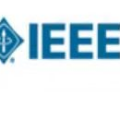By solving a positive semidefinite program, one can reduce a system of real quadratic equations to a system of the type $q_i(x)=\alpha_i$, $i=1, \ldots, m$, where $q_i: {\Bbb R}^n \longrightarrow {\Bbb R}$ are quadratic forms and $\alpha_i=\operatorname{trace} q_i$. We prove a sufficient condition for the latter system to have a solution $x \in {\Bbb R}^n$: assuming that the operator norms of the $n \times n$ matrices $Q_i$ of $q_i$ do not exceed 1, the smallest eigenvalue the $m \times m$ matrix with the $(i,j)$-th entry equal $\operatorname{tr} (Q_i Q_j)$ is at least $\gamma n^{2/3} m^2 \ln n$ for an absolute constant $\gamma >0$. In particular, this happens when $n \gg m^6$ and the forms $q_i$ are sufficiently generic. We prove a similar sufficient condition for a homogeneous system of quadratic equations to have a non-trivial solution.
翻译:通过解决一个正半半无线方案,人们可以将一个真正的二次方程系统降低到一个 $_i (x) ⁇ alpha_i$, $i=1,\ldots, m$, 其中$_i:\Bb R ⁇ n\longrightrow {Bb R} 美元是二次形式, $\alpha_ i ⁇ operatorname{trce} q_ i美元。我们证明,一个真正的二次方程系统有足够的条件获得一个 $x $x, $x = $ bbb R $ 美元 :假设一个绝对恒定 $\ gamma> 矩阵的操作者规范 $ $ $ i $ i 美元 美元 美元 美元 美元 美元 美元 美元 美元 美元 美元 美元 美元 美元 美元 美元 美元 美元 美元 美元 美元 美元 美元 美元 美元 美元 美元 美元 美元 。


